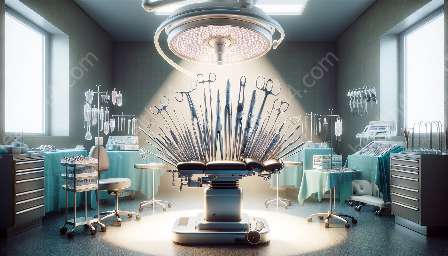Catheters play a crucial role in modern healthcare, serving a wide range of functions in medical procedures. From urinary catheters to cardiovascular catheters, the diverse applications of these devices make them an essential component in the field of medicine. To fully understand the world of catheters, it's important to delve into their various types, applications, and the role of surgical instruments and medical devices & equipment in their usage.
Types and Applications of Catheters
One of the primary aspects of catheters is their classification based on their intended use and design. Urinary catheters, for example, are widely used to drain the bladder when normal urination is not possible due to medical conditions, surgery, or other factors. This type of catheter comes in various forms, including indwelling catheters that remain in the bladder and intermittent catheters that are inserted and then removed to drain the bladder as needed.
Another significant category is vascular catheters, which are employed in cardiovascular and critical care settings to access the vascular system for various purposes, such as delivering medication, obtaining blood samples, or measuring pressure. These catheters are designed to be inserted into large veins or arteries and come in types like central venous catheters and arterial catheters, each tailored for specific medical requirements.
In addition to urinary and vascular catheters, there are specialized variants such as neurologic catheters used in diagnosing and treating neurological conditions, and gastrointestinal catheters designed for enteral feeding and drainage procedures.
Surgical Instruments in Catheterization
The successful placement and management of catheters often require the use of specific surgical instruments tailored to the procedure at hand. These instruments, such as scalpels, forceps, dilators, guidewires, and catheter insertion tools, are essential for ensuring precise and safe catheterization. In urinary catheterization, for instance, forceps are used to hold the catheter during insertion, while guidewires assist in positioning vascular catheters within blood vessels.
Furthermore, advancements in surgical instruments, such as the development of minimally invasive tools and specialized catheter kits, have significantly enhanced the efficiency and safety of catheterization procedures. Minimally invasive techniques reduce trauma to the patient and minimize recovery time, making them increasingly preferred in modern healthcare settings.
Advancements in Medical Devices & Equipment Related to Catheterization
As technology continues to progress, so does the development of medical devices and equipment related to catheterization. Innovative solutions such as catheter securement devices, antimicrobial catheters, and catheterization robots are aimed at improving the overall quality of patient care while minimizing potential risks and complications associated with catheter use.
Additionally, imaging technologies such as ultrasound and fluoroscopy have revolutionized the visualization of catheter placement and vascular access, allowing for greater precision and reduced procedural complications. These advancements in medical devices and equipment are pivotal in enhancing the safety, efficacy, and patient experience in catheter-based interventions.
Conclusion
Exploring the world of catheters, surgical instruments, and medical devices & equipment reveals the significant impact these elements have on modern healthcare. From the diverse applications of different catheter types to the crucial role of specialized surgical instruments and the continuous advancements in medical devices and equipment, the interconnectedness of these components underscores the importance of holistic and multidisciplinary approaches to catheterization and patient care.


